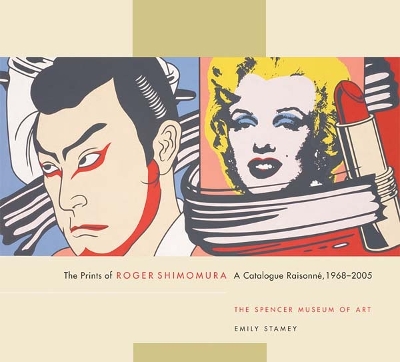The Jacob Lawrence Series on American Artists
1 total work
Best known as a painter and theater artist, Roger Shimomura explores his Japanese American identity through a vibrant and provocative stylistic combination of twentieth-century American pop art and traditional eighteenth- and nineteenth-century Japanese woodblock prints. In his printed works, one discovers a number of firsts, among them the artist's first examination of place; his first attempt to combat stereotypes by appropriating racist caricatures; and his first use of explicitly sexual imagery.
This catalogue raisonné is also a first. Featuring color reproductions of all the artist's 122 extant prints to date, along with notes by Shimomura about the creative and personal history behind particular images, this is the first publication to systematically examine a specific body of work within Shimomura's larger oeuvre. It is also the first to begin critically examining the importance of the Midwest to his work.
Emily Stamey's introductory essay melds a chronological narrative of Shimomura's printmaking career with insightful analyses of both specific images and the broader conceptual role of prints within his work. She traces the artist's stylistic trajectory from his first Andy Warhol inspired screen prints, made in the bathroom of his graduate student apartment in the late 1960s, to his most recent suite produced with master printer Michael Sims at the Lawrence Lithography Workshop. Within this narrative, Stamey examines the ways in which Shimomura's prints relate to and stand apart from his paintings and theater performances.
A native of Seattle, Shimomura completed his MFA at Syracuse University in New York, and then accepted a teaching position at the University of Kansas. Now retired, Shimomura still lives in Lawrence and remains engaged with the university. He has also made its Spencer Museum of Art the repository for his prints.
